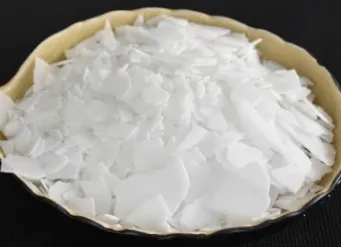Warning: Undefined array key "title" in /home/www/wwwroot/HTML/www.exportstart.com/wp-content/themes/1198/header.php on line 6
Warning: Undefined array key "file" in /home/www/wwwroot/HTML/www.exportstart.com/wp-content/themes/1198/header.php on line 7
Warning: Undefined array key "title" in /home/www/wwwroot/HTML/www.exportstart.com/wp-content/themes/1198/header.php on line 7
Warning: Undefined array key "title" in /home/www/wwwroot/HTML/www.exportstart.com/wp-content/themes/1198/header.php on line 7
- Afrikaans
- Albanian
- Amharic
- Arabic
- Armenian
- Azerbaijani
- Basque
- Belarusian
- Bengali
- Bosnian
- Bulgarian
- Catalan
- Cebuano
- China
- China (Taiwan)
- Corsican
- Croatian
- Czech
- Danish
- Dutch
- English
- Esperanto
- Estonian
- Finnish
- French
- Frisian
- Galician
- Georgian
- German
- Greek
- Gujarati
- Haitian Creole
- hausa
- hawaiian
- Hebrew
- Hindi
- Miao
- Hungarian
- Icelandic
- igbo
- Indonesian
- irish
- Italian
- Japanese
- Javanese
- Kannada
- kazakh
- Khmer
- Rwandese
- Korean
- Kurdish
- Kyrgyz
- Lao
- Latin
- Latvian
- Lithuanian
- Luxembourgish
- Macedonian
- Malgashi
- Malay
- Malayalam
- Maltese
- Maori
- Marathi
- Mongolian
- Myanmar
- Nepali
- Norwegian
- Norwegian
- Occitan
- Pashto
- Persian
- Polish
- Portuguese
- Punjabi
- Romanian
- Russian
- Samoan
- Scottish Gaelic
- Serbian
- Sesotho
- Shona
- Sindhi
- Sinhala
- Slovak
- Slovenian
- Somali
- Spanish
- Sundanese
- Swahili
- Swedish
- Tagalog
- Tajik
- Tamil
- Tatar
- Telugu
- Thai
- Turkish
- Turkmen
- Ukrainian
- Urdu
- Uighur
- Uzbek
- Vietnamese
- Welsh
- Bantu
- Yiddish
- Yoruba
- Zulu
Οκτ . 12, 2024 04:59 Back to list
Exploring the Properties and Applications of Polyethylene and Polypropylene Glycols in Industry
The Role of Polyethylene Glycol and Polypropylene Glycol in Modern Applications
Introduction
Polyethylene glycol (PEG) and polypropylene glycol (PPG) are two versatile polyethers that have gained significant attention in various industries due to their unique chemical properties and functionalities. Both compounds play crucial roles in pharmaceuticals, cosmetics, food processing, and industrial applications. Understanding the characteristics and applications of PEG and PPG can illuminate their importance in our daily lives.
What are Polyethylene Glycol and Polypropylene Glycol?
Polyethylene glycol is a water-soluble polymer made from repeating units of ethylene oxide. Its general formula is (C2H4O)n, where 'n' represents the average number of repeating units. PEG is characterized by its low toxicity, high stability, and ability to dissolve a wide range of substances, making it an ideal candidate for various applications.
In contrast, polypropylene glycol is produced from propylene oxide, resulting in a non-toxic compound with good solubility in organic solvents and variable viscosity and molecular weight. PPGs are commonly used to modify the properties of other substances, particularly in industrial applications.
Applications in Pharmaceuticals
In the pharmaceutical industry, PEG is widely used as a drug delivery agent. Its ability to solubilize poorly soluble drugs is vital for enhancing bioavailability. PEGylation—the process of attaching PEG molecules to drug molecules—improves the solubility, stability, and half-life of therapeutics, particularly proteins and monoclonal antibodies.
Moreover, PEG’s use in laxatives, such as PEG 3350, showcases its efficacy in providing osmotic effects for treating constipation. The hydrophilicity of PEG helps retain water in the intestinal lumen, facilitating easier bowel movements.
Polypropylene glycol, while not as commonly employed in drug formulation as PEG, finds its place as a component in formulations for topical applications. Its skin conditioning properties make PPG an important ingredient in creams and ointments, enhancing the texture and applicability of these products.
Cosmetic Formulations
polyethylene glycol and polypropylene glycol

The cosmetic industry also benefits significantly from PEG and PPG
. PEG is utilized in a variety of personal care products, including moisturizers, shampoos, and sunscreens. With its ability to enhance product spreadability and improve moisture retention, PEG helps create a smooth and desirable texture in formulations.PPG is popular in the formulation of hair care products and skin emollients. It acts as a humectant and solvent, helping to retain moisture and improve the skin feel. Moreover, its emollient properties provide a soft and supple feel without leaving an oily residue, making it a desirable additive in many cosmetic formulas.
Food Processing Applications
In food processing, PEG and PPG serve as food additives and ingredients to improve texture, viscosity, and moisture retention. PEG is often used as a humectant in food products, helping to keep them moist and extend their shelf life. Its safety and approval for use in food applications have made it a reliable ingredient in many processed foods.
PPG is less commonly used in food processing; however, it still finds some applications as a stabilizing agent in various food formulations. Its non-toxic nature makes it an acceptable choice for limited use in food products.
Industrial Utilization
In the industrial sector, both PEG and PPG are utilized for their chemical properties. PEG is used as a lubricant and anti-foaming agent in various manufacturing processes. Its compatibility with both water and organic solvents broadens its application range.
PPG is often employed in the production of polyurethanes, surfactants, and coatings. Its ability to modify the properties of polymers makes it essential in the formulation of flexible foams, elastomers, and adhesives.
Conclusion
Polyethylene glycol and polypropylene glycol are integral to numerous industries, proving their versatility and importance. From enhancing drug delivery systems to improving cosmetic formulations and food processing, the applications of PEG and PPG continue to expand. As research progresses and new formulations are developed, these compounds are likely to play an even more significant role in innovative solutions across various sectors, proving their indispensable value in modern science and industry.
Latest news
-
Certifications for Vegetarian and Xanthan Gum Vegetarian
NewsJun.17,2025
-
Sustainability Trends Reshaping the SLES N70 Market
NewsJun.17,2025
-
Propylene Glycol Use in Vaccines: Balancing Function and Perception
NewsJun.17,2025
-
Petroleum Jelly in Skincare: Balancing Benefits and Backlash
NewsJun.17,2025
-
Energy Price Volatility and Ripple Effect on Caprolactam Markets
NewsJun.17,2025
-
Spectroscopic Techniques for Adipic Acid Molecular Weight
NewsJun.17,2025

